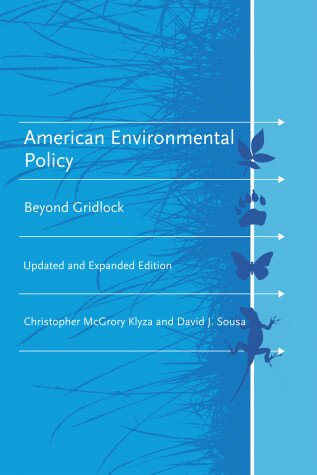American and Comparative Environmental Policy
3 total works
American Environmental Policy 1990-2006
by Christopher McGrory Klyza and David J. Sousa
Klyza and Sousa identify and analyze five alternative policy paths, which they illustrate with case studies: "appropriations politics" in Congress; executive authority, including the rulemaking process; the role of the courts, whose role in environmental policymaking has grown in the era of legislative gridlock; "next-generation" collaborative experiments (which, the authors argue, should be seen as an important approach but not a panacea); and policymaking at the state level. Their comprehensive analysis of the state of environmental policymaking since 1990 shows that although legislative gridlock is unlikely to dissipate anytime soon, the nation continues to move in the direction favored by environmentalists, largely because of the policy legacies of the 1960s and 1970s that have created an enduring "green state" rooted in statutes, bureaucratic routines, and public expectations. Christopher McGrory Klyza is Robert '35 and Helen '38 Stafford Professor of Public Policy and Professor of Political Science and Environmental Studies at Middlebury College. David Sousa is Professor in the Department of Politics and Government at the University of Puget Sound.
American Environmental Policy
by Christopher McGrory Klyza and David J. Sousa
An updated investigation of alternate pathways for American environmental policymaking made necessary by legislative gridlock.
The "golden era" of American environmental lawmaking in the 1960s and 1970s saw twenty-two pieces of major environmental legislation (including the Clean Air Act, the Clean Water Act, and the Endangered Species Act) passed by bipartisan majorities in Congress and signed into law by presidents of both parties. But since then partisanship, the dramatic movement of Republicans to the right, and political brinksmanship have led to legislative gridlock on environmental issues. In this book, Christopher Klyza and David Sousa argue that the longstanding legislative stalemate at the national level has forced environmental policymaking onto other pathways.
Klyza and Sousa identify and analyze five alternative policy paths, which they illustrate with case studies from 1990 to the present: "appropriations politics" in Congress; executive authority; the role of the courts; "next-generation" collaborative experiments; and policymaking at the state and local levels. This updated edition features a new chapter discussing environmental policy developments from 2006 to 2012, including intensifying partisanship on the environment, the failure of Congress to pass climate legislation, the ramifications of Massachusetts v. EPA, and other Obama administration executive actions (some of which have reversed Bush administration executive actions). Yet, they argue, despite legislative gridlock, the legacy of 1960s and 1970s policies has created an enduring "green state" rooted in statutes, bureaucratic routines, and public expectations.


